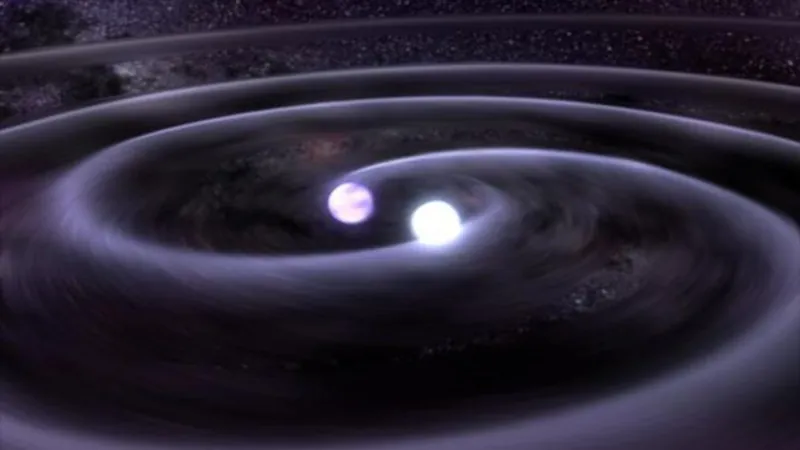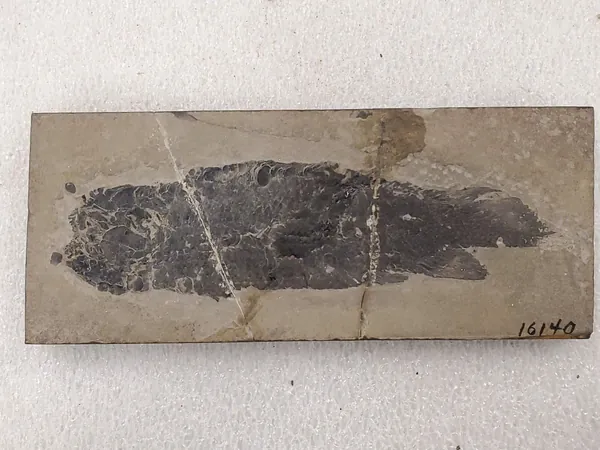
Unraveling the Mystery of Hypervelocity White Dwarfs: Cosmic Cannonballs on the Loose!
2025-08-29
Author: Sarah
The Cosmic Enigmas: Hypervelocity White Dwarfs
White dwarfs, the dense remnants of stars like our sun, typically lead quiet existences in the universe. However, a select few have emerged as cosmic marvels, defying the norms—they are the hypervelocity white dwarfs, speeding through the Milky Way at astonishing velocities of up to 1,240 miles per second (2,000 kilometers per second). To put that in perspective, they could travel from New York to Los Angeles in less than two seconds!
From Mystery to Explanation: Groundbreaking Research
Since their discovery in 2018, these stellar speedsters have perplexed astronomers. The cause of their extreme velocities remained elusive, with no single explanation adequately addressing their high speeds alongside their unusual, inflated appearances—until now. A groundbreaking study led by Hila Glanz of the Technion-Israel Institute of Technology has finally cracked the case!
Utilizing sophisticated computer simulations, Glanz and her team explored the aftermath of a merger between two white dwarfs in a tight binary system. "It’s like a puzzle," Glanz expressed, eager to piece together this cosmic mystery.
The Dramatic Dance of Destruction
Published in the journal Nature Astronomy, the researchers demonstrated how these white dwarfs, composed of carbon-oxygen cores shrouded in helium shells, engage in a violent dance of merging. As the lighter star spirals toward its heftier partner, it gets torn apart, igniting the helium shell of the more massive star in a spectacular explosion.
This cataclysm sends shockwaves across the surface of the star, leading to a secondary detonation at the core, resulting in a thermonuclear supernova that obliterates the primary star. "It completely explodes; there’s nothing left," Glanz detailed.
Ejected and Unbound: The Journey of the Cosmic Wanderers
With its partner gone, the surviving star is flung into space at incredible speed, propelled by the violence of the explosion and orbital energy amassed during the event. The simulation revealed how this process accounts for both the frantic ejection velocities and the bright, inflated appearances characteristic of hypervelocity white dwarfs.
The Fast Track to Understanding Type Ia Supernovae
The implications of this study extend beyond mere curiosity. It offers insights into the origins of Type Ia supernovae—stellar explosions that serve as cosmic markers for measuring distances across the universe and are responsible for creating vital elements, including iron.
The research proposes that hypervelocity white dwarfs result from a variety of stellar interactions, hinting at a rich diversity of events rather than a singular cause. Glanz emphasizes, however, that this is only one piece of the larger cosmic puzzle.
Looking Ahead: The Next Chapter in Stellar Exploration
The Vera C. Rubin Observatory is on the verge of launching extensive sky surveys that may yield further evidence supporting this dramatic merger theory. If astronomers can observe such an event in real-time, it would bring incredible validation to these thrilling findings.
As Glanz remarks, "We did not really know what we were going to get. When the results aligned with our long-standing questions, it was super cool!" The journey to uncover the mysteries of our universe continues, transforming these hypervelocity white dwarfs from mere cosmic anomalies into integral components of stellar evolution.


 Brasil (PT)
Brasil (PT)
 Canada (EN)
Canada (EN)
 Chile (ES)
Chile (ES)
 Česko (CS)
Česko (CS)
 대한민국 (KO)
대한민국 (KO)
 España (ES)
España (ES)
 France (FR)
France (FR)
 Hong Kong (EN)
Hong Kong (EN)
 Italia (IT)
Italia (IT)
 日本 (JA)
日本 (JA)
 Magyarország (HU)
Magyarország (HU)
 Norge (NO)
Norge (NO)
 Polska (PL)
Polska (PL)
 Schweiz (DE)
Schweiz (DE)
 Singapore (EN)
Singapore (EN)
 Sverige (SV)
Sverige (SV)
 Suomi (FI)
Suomi (FI)
 Türkiye (TR)
Türkiye (TR)
 الإمارات العربية المتحدة (AR)
الإمارات العربية المتحدة (AR)